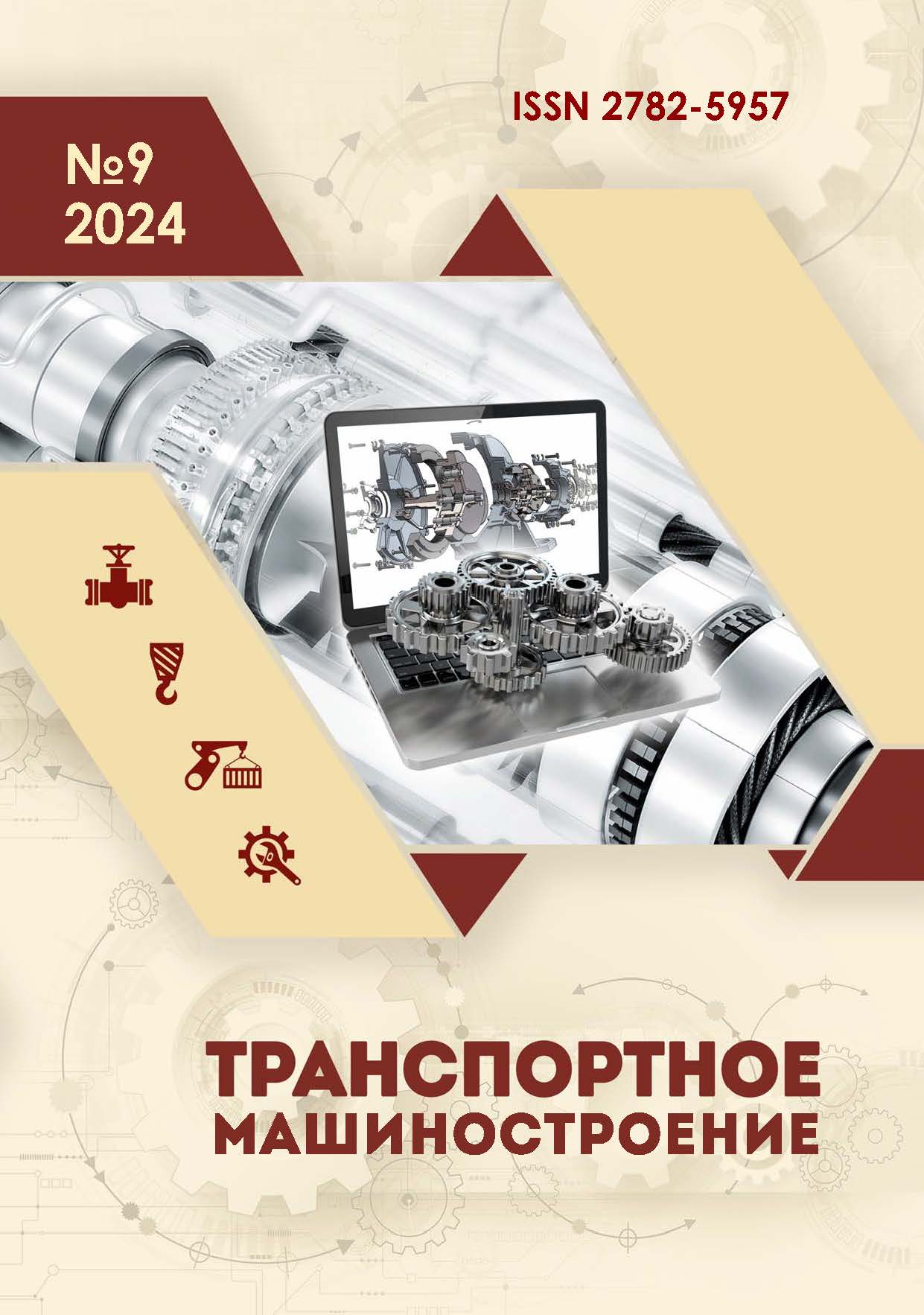employee
Bryansk, Bryansk, Russian Federation
Bryansk, Bryansk, Russian Federation
Bryansk, Bryansk, Russian Federation
employee
Moscow, Moscow, Russian Federation
392
The relevance of improving existing and developing new traction drive systems for locomotives is shown. The development of the concept of an energy-saving traction drive is considered. For electric current traction amplifiers, a device for increasing the traction of a wheel with a rail is proposed, which has a contactless capacitive current collector. Several designs are proposed that make it possible to place an inductor of sufficient size and weight on the axis of the wheelset. As a design requiring minimal changes in the carriage, a chordal arrangement of the inductor is proposed when using a ferromagnetic core to enhance the magnetic flux. The design of the body supports is proposed, the use of which will increase the coefficient of using traction weight, reduce power losses and increase the efficiency of energy conversion and the realization of traction properties of the drive.
rail traction, inductor, engine, energy saving, protection, current, magnetic flux, electric drive
1. Kosmodamiansky AS. The concept of developing energy-saving electromechanical systems: monograph. Orel: State University. UNPC; 2014.
2. Igin VN. Efficiency of locomotives in the conditions of the Eastern polygon. Proceedings of the Scientific and Practical Conference, 2022: Innovative Technologies in Railway Transport. Moscow: Russian University of Transport; 2022.
3. Antipin DYa, Vorobyev VI, Izmerov OV, Korchagin VO, Kosmodamiansky AS, Pugachev AA. Improvement of traction qualities of locomotives with the help of magnetic traction amplifiers: monograph [Internet]. Bryansk: BSTU; 2018.
4. Pugachev AA, Vorobyov VI, Izmerov OV, Nikolaev EV. Analysis and development of constructive solutions of crew parts to improve locomotive traction properties. Transport Engineering. 2023;6(18):52-62.
5. Kosmodamiansky AS, Vorobyev VI, Izmerov OV, Pugachev AA, Nikolaev EV, Karpov AE. Development of classification of magnetic wheel-rail traction amplifiers Interuniversity collection of scientific papers, 2023: Modern Problems of Improving the Work of Railway Transport. Moscow: RUT (MIIT): ROAT; 2023.
6. Ries EE. The electric current as a means of increasing the tractive adhesion of railway motors and other rolling contacts. A full review of this important subject, with accounts of its experimental examination. Scientific American. 1887;24(623):9953-9954.
7. Yanson OM. On the issue of an electromagnetic method for improving the conditions of traction of electric locomotive wheels with rails. Zapiski Leningradskogoordenov Lenina I Trudovogo Krasnogo Znameni Gornogo Instituta. Leningrad; 1954.
8. Rudyakov ZZ. Reserves for increasing the weight standards of trains. Zheleznodorozhny Transport. 1962;2:28-31.
9. Ananyev KA, Rysyev AV. Mine electric locomotive with an electromagnetic traction body. Zapiski Leningradskogoordenov Lenina I Trudovogo Krasnogo Znameni Gornogo Instituta. Leningrad; 1966.
10. Sitnikov EA, Rodionov IN, Grinevich VP. Research on improving the traction properties of shunting locomotives by using electromagnetic traction enhancement and more optimal connection schemes for traction electric motors. Final report, 1982: Research and Development Work to Improve the Performance, Reliability and Durability of Locomotive. Kolomna: VNIKTI; 1982.
11. Luzhnov YuM, Pruntsev AP. Influence of the magnetic field on the mechanism of wheels and rails interaction. Trudi MIIT; 1975.
12. Delusto LG. Fundamentals of metal rolling in permanent magnetic fields. Moscow: Mashinostroenie; 2005.
13. Tikhomirov VP, Vorobyev VI, Vorobyev DV, Bagrov GV, Borzenkov MI, Butrin MI. Modeling of wheel-rail traction: monograph. Orel: Orel GTU; 2007.
14. Ivakhin AI, Travinichev VI, Petrakov DI. Stand for the study of traction properties in the wheel-rail system of railway vehicles. Tyazheloye Mashinostroyeniye. 2011;4:2-5.
15. Izmerov OV. Technical innovation. Methods of inventive creativity: monograph. Orel: State University. UNPK; 2011.






